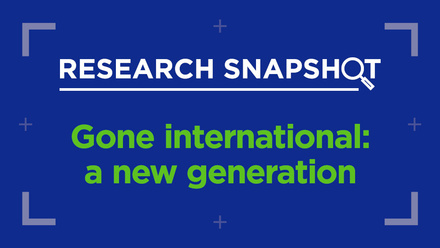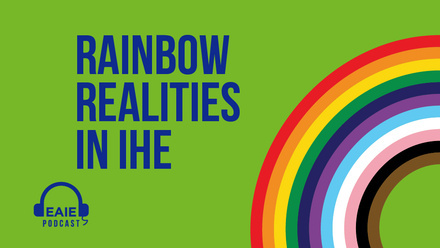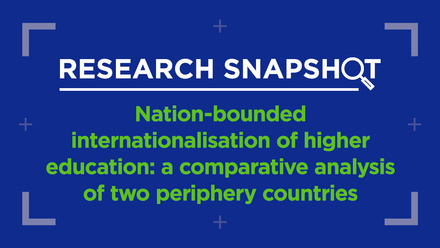Gender inequality in higher education: lessons from Ireland

In 2021, among the European population between 25 and 34 years of age, more women (47%) than men (36%) had a third-level qualification. This gender gap in educational attainment is persistent and growing. While there is near equality in doctoral graduates (women 48%, men 52% in 2018), this positive position does not filter into the gender distribution of full professor posts, at which level women hold just one quarter (26%) of the top academic positions in higher education. They also hold just under one quarter (24%) of institutional leadership roles.
These gendered patterns underscore a contrast between educational attainment and career progression, and suggest that we have a problem of gender inequality in higher education. Despite a considerable volume of analysis, and many worthy singular initiatives over the past two decades and more, the dial on gender equality has failed to shift. The problem is system-wide, deeply ingrained in institutional structures and customary perceptions of excellence, and is influenced by cultural norms on gender roles unconsciously absorbed into higher educational practices.
In the last decade, the European Commission has developed policy documents and funded multiple excellent projects addressing gender inequality in research and innovation. Combined, these measures have created an environment in which gender issues are seen as important to address. Individual countries have progressed, at varying paces, to reform the institutional culture of higher education towards greater equality and inclusion.
Reviewing gender equality in Ireland
In Ireland, tackling gender inequality in higher education has been a public policy priority since 2015, when the Higher Education Authority (HEA – Ireland’s funding and regulatory body for higher education) required Irish higher education institutions to commit to the principles of gender equality expressed in the Athena SWAN Charter and apply for Athena SWAN accreditation. This charter and award system, developed in a UK context, was foundational to shifting the culture towards gender equality through targeted gender equality plans. To further aid the policy initiative, the HEA commissioned a first comprehensive review of gender equality in higher education in 2016, chaired by former European Commissioner Maire Geoghegan-Quinn. The review report produced a blueprint for change to which all higher education institutions were held accountable.
The Athena SWAN Charter was foundational to shifting the culture towards gender equality through targeted gender equality plans
Six years on, the HEA initiated a second review conducted by a six-person group with national and international expertise and chaired by former Secretary-General of the Department of Social Protection, Niamh O’Donoghue. The Second National Review of Gender Equality in Irish Higher Education, published in December 2022, made 19 recommendations in the following areas for the further advancement of gender equality in Irish higher education: leadership; organisational culture; teaching and learning along with research and quality assurance; intersectionality; career development; precarity; and finally, data capture, analysis and reporting. Two of these areas – intersectionality and precarity – were identified as new issues that have emerged since the 2016 review.
Intersectionality and data collection
Increasingly, the social and cultural diversity of our higher education environment needs to be reflected in our consideration of cross-cutting inequalities. This requires an approach that is sensitive to the dynamics of power and privilege in a university. In understanding intersectionality, and addressing it, we are all in a learning mode. Here, we rely on respectful listening, and taking action in consultation with the minoritised members of our educational communities, to advance equality.
The social and cultural diversity of our higher education environment needs to be reflected in our consideration of cross-cutting inequalities
Additionally, one cannot underestimate the importance of accurate and timely data as evidence of where action needs to be taken. It takes time to work with colleagues in IT systems and human resources, explaining the need for gender-disaggregated data collection, but this is an important investment in delivering the strategic and operational ambition for gender equality.
Leadership really matters
Just as important as a conducive policy environment is leadership commitment within universities and colleges to tackling gender inequality through institutional change. A key element is the inclusion of an equality commitment in the strategic planning and operation of the institution. In my own long experience of advocating for gender equality within various higher education bodies, leadership commitment to change has proven necessary for success.
A key element is the inclusion of an equality commitment in the strategic planning and operation of the institution
The form this commitment takes is also critical to embracing and embedding gender equality. Leaders need to provide support to those tasked with operationalising the strategic commitment. Leaders also need to speak out to the organisation, communicating the importance of gender equality to the university/college mission and values.
Sticking points: promotions and maternity
Reflecting on policy and practice, two specific areas for action seem to occur repeatedly, though may present in varied ways. One is promotions, which requires a gender-critical review to ensure that equity and fairness are built into the process. For some universities in the European Union, the rules for academic career advancement are set at the national level, limiting the autonomy of higher education institutions for internal promotion. Yet, even in such restricted circumstances it is possible to encourage academics career ambitions in ways that benefit women. One action could be to provide time within the workload allocation to aid applicants prepare for national promotion examinations, then encourage women academics to avail themselves of this supportive measure. The point is clear – so long as women are under-represented in senior academic positions, every institution and every higher education system should pay attention to addressing this systemic discrimination.
The second area centres on the time women take for caring, especially processes surrounding maternity leave and subsequent return to work. While national regulations provide a framework in which maternity leave entitlements are specified, the institutional application of these regulations through procedures and processes can be improved. For example, before a woman takes her maternity leave, is she required to double up her teaching to clear the way for taking leave? Or perhaps she is required to make up for untaught modules on her return? These practices are common and call for action towards institutional change.
Towards a more equal institution
The high-level, policy-driven approach to gender equality has inevitably called for implementation in Irish higher education institutions. This has resulted in a rapid adoption of gender equality plans, with 18 of 23 institutions obtaining Athena SWAN accreditation to date, in addition 94 departmental awards. Over the decade of Athena SWAN in Ireland, this action-oriented approach at institutional level, along with the requirements of national funders (particularly Science Foundation Ireland and the Irish Research Council), and regulatory direction by the HEA, has resulted in the development of a supportive ecosystem for tackling endemic gender inequality in the sector.
The evidence from Ireland shows that the problem of gender inequality in higher education can be addressed. A measured approach, a clear framework and an action plan with deliverables and timelines contribute motivation for change. Continued leadership support and strategic prioritisation is also required for progress. The prize is a more gender-equal institution, where people of all genders can work, study, and achieve their ambitions.






